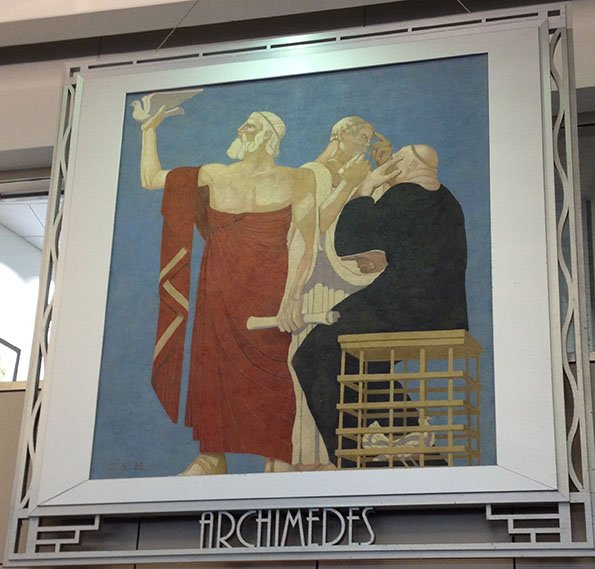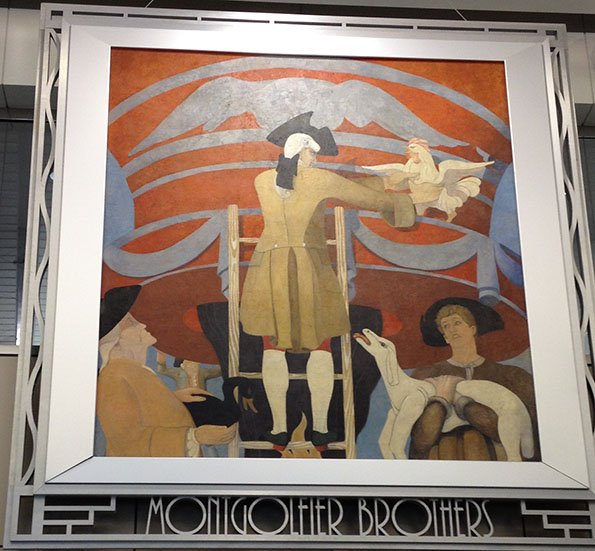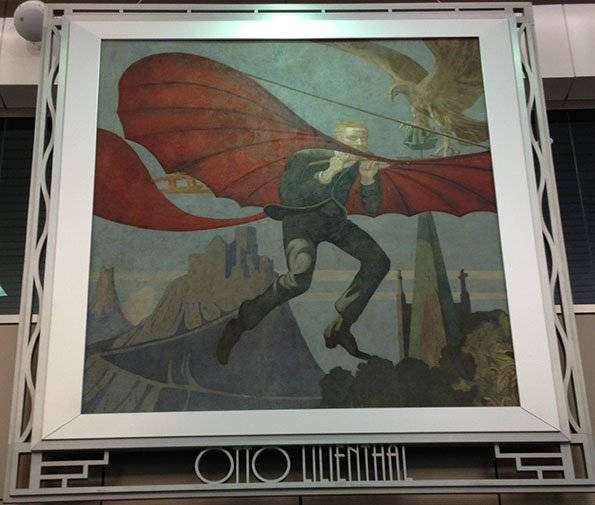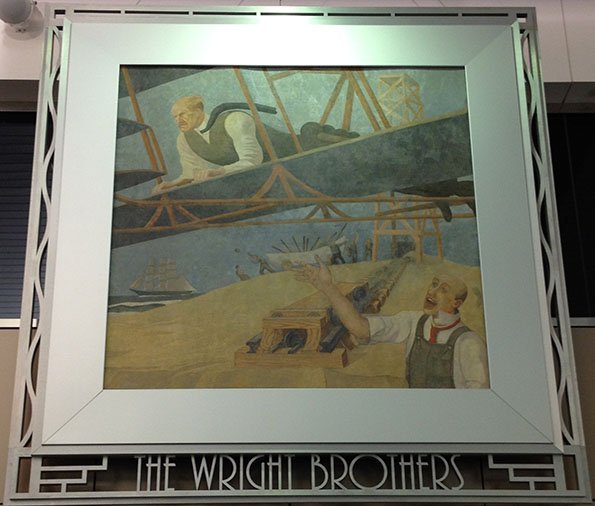History of Flight Told Through WPA Murals at Tampa International Airport (KTPA)
/If you find yourself waiting for a commercial flight in terminal E at Tampa International Airport, you can learn about the history of flight from a series of murals hanging in the terminal building.
Through the Works Progress Administration Federal Arts Project in 1939, St. Petersburg, Fla., artist George Snow Hill was commissioned to paint seven murals for the Peter O. Knight Airport, which itself was a WPA project.
A display in terminal E explains the full history of the murals, their removal from the original airport, two restorations and installation in the current terminal. Learn more about each mural below in order in which they appear in the gallery:
1. Icarus and Daedalus
In Greek mythology, the inventor Daedalus built wings of wood, wax and feathers so he and his son Icarus could escape the Labyrinth they built to protect the treasure of King Minos, who later trapped the two inventors within it. Before flight, Daedalus warned his son not to fly near the sun because the heat would melt the wax and not to fly too close to the sea because the mist would dissolve the wax. Icarus ignored the warning in his excitement, flew too close to the sun and perished in the sea.
2. Montgolfier Brothers
Jacques Etienne Montgolfier and Joseph Michel Montgolfier invented the hot air balloon. Joseph, with Etienne’s assistance, created his own cloud with a taffeta envelope and hot air in 1782. In June 1783, they publicly launched a hot air balloon, which had a circumference of 100 feet and weighd almost 500 lbs. It rose to 6600 feet and returned to land. In September 1783, they launched a balloon carrying a sheep, duck and rooster. Hill’s mural depicts this first flight carrying living beings. In November 1783, science teacher Pilatre de Rozier and infantry officer Marquis d’Arlandes flew 9 km over Paris and became the first people to fly in a hot air balloon.
3. Archimedes
Among other accomplishments, the ancient Greek mathematician and engineer calculated the value of pi, invented the hydraulic screw and established principles for calculus, which was invented two millennia later. He also studied laws that control objects floating through liquids and gases, which affect flight.
4. Otto Lilienthal
In the late Nineteenth Century, this German engineer studied bird flight mechanics and aerodynamics and used the data to develop different wing shapes on 18 different gliders. He made more than 2500 glider flights between 1891 and 1896, when a wind gust caused his glider to stall and lose control near Berlin. The Wright Brothers and other inventors used Lilienthal’s research in their designs.
5. The Wright Brothers
Inspired after reading about Otto Lilienthal’s glider experiments, Wilbur Wright and his brother Orville invented the airplane by determining that three components affect flight: wing shape, power and, crucially, control. First flight occurred on the beach in Kitty Hawk, N.C., on Dec. 17, 1903.
6. Tony Jannus in Russia
Benoist Aircraft Co. hired Tony Jannus as a flight instructor and demonstrator in 1911. In the following years, he set records for passenger flights and flying distance. He made more aviation history in the Tampa area on Jan. 1, 1914, when he flew the first scheduled flight on a winged aircraft crossed Tampa Bay between St. Petersburg and Tampa. St. Petersburg-Tampa Airboat Line operated the 23-minute flight on a Benoist Type XIV flying boat, a single-engine, 75-h.p. amphibious biplane. (Artist George Snow Hill painted a triptych about this birth of commercial aviation for his Tampa WPA airport commission as well.)






